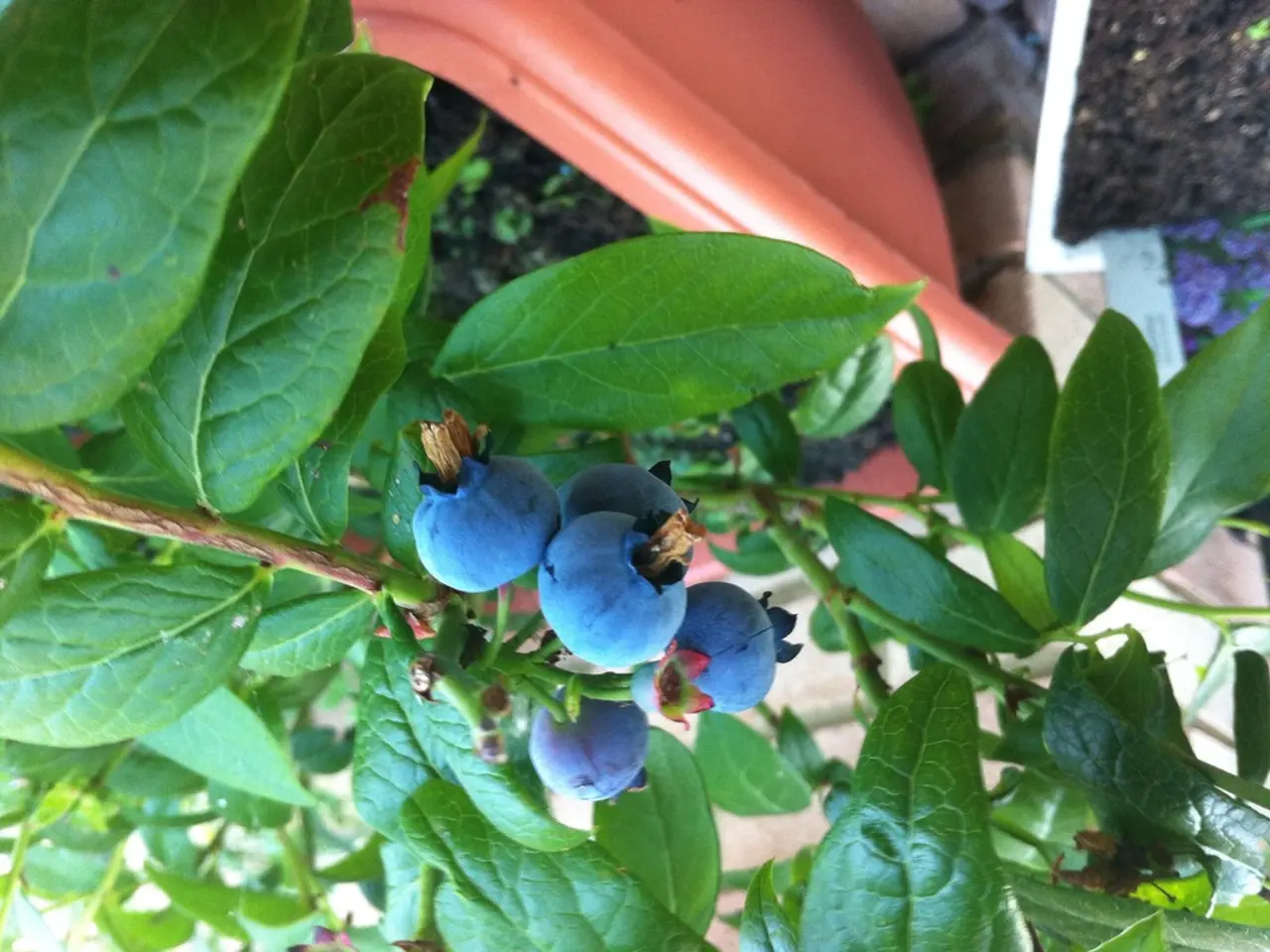Nurture Radiant Blueberries in Your Own Backyard
Welcome to our guide on growing blueberries at home! This article will provide you with essential tips for soil, fertilizer, tools, and garden setup to ensure a bountiful blueberry harvest.
Soil Requirements
To thrive, blueberries need acidic soil with a pH of 4.5 to 5.5. You can use a potting mix designed for acid-loving plants, or create your own mix with peat moss, pine bark, and perlite. Regular garden soil tends to be too alkaline, so it's best to avoid it[3].
Fertilizer
Blueberries benefit from fertilizers formulated for acid-loving plants. Apply fertilizer in early spring and after harvest, but be careful not to over-fertilize. Organic options like composted pine bark or acidic compost work well to maintain soil acidity[3].
Soil Testing and Amendments
Before planting, test your soil pH. If it's too alkaline, amend it with elemental sulfur or acidic organic matter such as sphagnum peat moss. Peat moss is commonly recommended to lower pH while mulching, but be aware that it can retain moisture strongly and reduce drainage, so careful management is needed[2][4].
Planting Location
Choose a location that receives full sun (6-8 hours daily) for optimal berry production. Avoid shaded or waterlogged areas. Ensure well-draining soil to prevent root rot; if necessary, plant in raised beds or mounds. Protect plants from strong winds by placing them near a natural or artificial windbreak[3].
Tools and Setup
- Use soil test kits for pH measurement.
- Prepare beds with peat moss and pine bark for acidity and aeration.
- Plant blueberry bushes at the same soil level as in their nursery pots to avoid root stress[5].
- Consider raised beds or containers if your ground soil is unsuitable.
- Regular watering tools that provide consistent moisture without waterlogging are important. Recommended items include a Premium Polyurethane Soaker Hose, Seven Spray Water Saving Hose Nozzle, and a 16" RainSelect Rain Wand.
Additional Tips
- Blueberry seeds can be started indoors in moist sphagnum peat moss seed trays but require patience due to slow germination (6-8 weeks or more)[1].
- Mulching with organic materials such as pine bark or peat moss helps retain moisture and maintain acidity.
- Avoid black weed barriers that dry out soil too much[4].
By following these steps and using recommended products like acidifying soil amendments (peat moss, sulfur), acid-specific fertilizers, proper tools for soil testing, and choosing the right garden setup (sunny location, raised beds), you can successfully grow blueberries at home.
Recommended Products
- SoilKey Organic Fertilizer
- SoilKey Organic Concentrated Compost (18 lbs size)
- Natural Cedar Raised Garden Beds
- Pruning Shears
- Seven Spray Water Saving Hose Nozzle
- Premium Polyurethane Soaker Hose
- 16" RainSelect Rain Wand
Lastly, remember that blueberries require full sun to partial shade for optimal growth. They should be spaced about 4-6 feet apart when planting. Blueberry plants can be grown in containers, but they require a large pot with good drainage. Prune blueberry plants after harvest to promote new growth[6].
Happy blueberry growing!
[1] University of Missouri Extension. (2021). Blueberry Production. https://extension.missouri.edu/publications/G8542 [2] University of Illinois Extension. (2021). Soil Testing for Home Lawns and Gardens. https://extension.illinois.edu/soiltest/ [3] University of Maine Cooperative Extension. (2021). Blueberry Production Guide. https://extension.umaine.edu/publications/4023e/ [4] University of California Agriculture and Natural Resources. (2021). Soil pH for Home Gardens. https://cesanfrancisco.ucanr.edu/blogs/blogcore/postdetail.cfm?postnum=2993 [5] University of Massachusetts Amherst. (2021). Blueberry Planting. https://extension.umass.edu/landscape/fact-sheets/blueberry-planting [6] University of Florida IFAS Extension. (2021). Blueberry Production. https://edis.ifas.ufl.edu/pdffiles/CV/CV02600.pdf
Incorporating raised beds into your home-and-garden setup can provide optimal growing conditions for blueberries, taking advantage of their need for well-draining soil and acidity. Following the recommended products, such as SoilKey Organic Concentrated Compost and Natural Cedar Raised Garden Beds, can help maintain the essential acidity in the soil for a successful blueberry harvest. Alongside the right tools for soil testing and recommended fertilizers, gardening with raised beds can enhance your home lifestyle by allowing you to grow delicious and nutritious blueberries.




